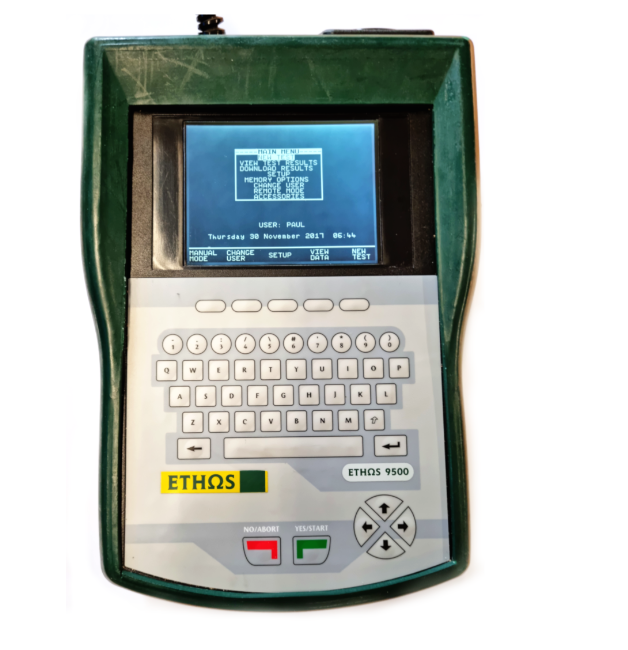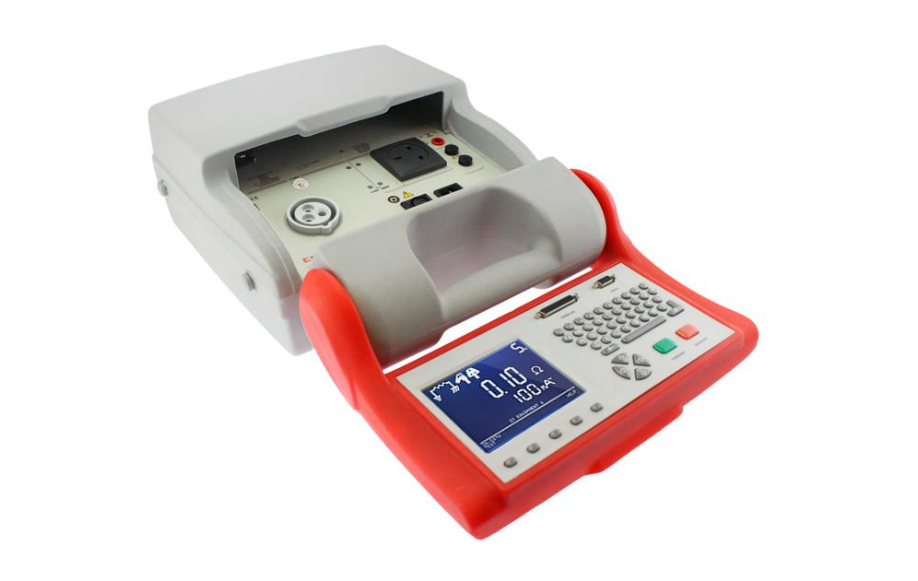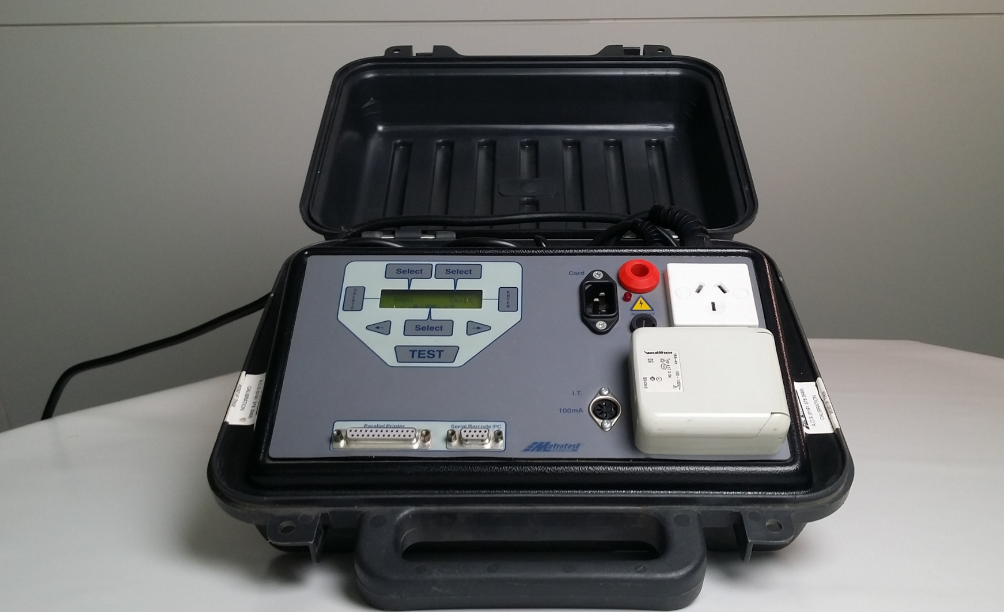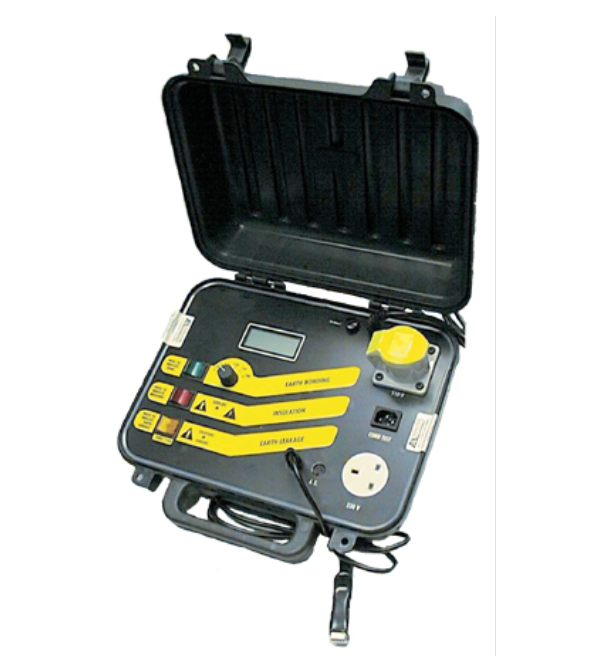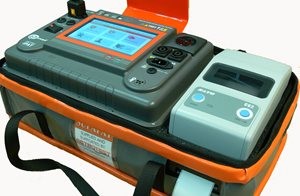Today we review another popular tester in the $1,000 – $2,000 range, this being the Seaward 3760DL.
This is a totally new revamp of the old original Seaward 3760, which at the time was a very good tester, there are many of the original Seaward 3760 still in service today.
This unit, depending on where you buy it, sits around the $1,000 mark, so price wise it’s very attractive.
It comes in a “always unzip wrong side of bag, bag”. The bag has 2 zips and because of the design you never know what you’ll find when you undo the zip! It will either be the tester or the accessories (like being a kid, opening a lucky dip all over again).
That aside, the bag and case are still very adequate and Seaward obviously agree or they wouldn’t still be using them.
This PAT, unlike the earlier 3760, can work off batteries for some tests.
The tester has 9 push buttons that control the test functions and also the data, which can be stored or printed via a specific (and expensive) mobile tag printer. Unfortunately like the previous model of the 3760, these switches still feed mostly unresponsively – there’s a lack of positive response when pushed. Further confusion is added if two switches are held down, such as when doing a leakage test.
The display is via a large-ish LCD which is clear to read, pass or fail results are indicated by a tick or cross and via the actual test results. Like most PATs when attaching a printer and printing a pass or fail tag, results may not be so clear if you can only see half the tag.
Probably a bit like the original 3760, it’s not particularly intuitive as to what button to push and when, Seaward have tried to use diagrams on the case to show what button is appropriate but sometimes more information would be helpful. I’m sure on occasions people have just kept pushing buttons until they got a pass out of frustration, not a desirable solution when it comes to safety!
Supply lead and test leads are adequate but depending on your model make sure you also keep the supply lead safe (as it’s not a standard, easily replaceable lead).
So, let’s move on to the testing functions. The earth test or earth bond as it’s often called is more than disappointing, considering the earlier version of this PAT could do an earth test at 10 amps, the latest however can only test at 200milliamps (0.2 Amp).
This in our opinion puts this little PAT into the compliance only PAT box, i.e. we do not consider it a safety tester which is very disappointing.
Next as usual we look at the Insulation Resistance test. This works well providing you only want to do this test at 500 volts as there is no option for a 250-volt test. This aspect isn’t a deal breaker as a leakage test can normally be done (though unlike the insulation test it need mains power available). The 250-volt test is also regularly used for the testing of surge protected equipment to stop the item from tripping.
The leakage test has to be done at a normal operating voltage as usual. This works well……IF you can get it to work AND the item under test is suitable i.e. it doesn’t have a momentary high start-up current (which is very common) or a very low current draw. Making this scenario even worse is that the maximum load on the output socket and fuse rating is 10 amps!
Testing a lot of tools on a Monday morning will likely make a bad day much worse as you’ll get messages like “load too low” or “load too high” then if you refer to the manual they’ll suggest you do a 500 volt Insulation Resistance test; which is all very well if you’re not trying to comply with the ASNZS 3760 standard which mandates leakage in many situations. You have to pity the users of these testers when this scenario happens – and it will!
Polarity Testing is what we next look at and this again becomes interesting. When testing normal leads and power boards there’s no problem and you can perform multiple earth-only tests for power boards. This is sometimes very helpfull but if the item you need to test is a power board with a MOV fitted, such as a surge protected power board, you cannot do a polarity test as part of the test sequence, which could in some situations be an essential test.
The last test function we’ll look at is the PRCD function. This is designed to test 10 and 30 milliamp PRCD’s for trip time. This works fine and will test at the top and bottom of the sine wave, there is no ramp current test option available which would have been a nice feature and practically beneficial for the owners of PRCD’s with a nuisance trip problem!
When testing portable PRCD’s there will sometimes be a requirement that polarity testing is also done, unfortunately this in a sequential format isn’t possible on this PAT.
Other features:
Can also be used with a printer and does have a memory, typical of this style of tester the entry of data isn’t going to be noteworthy on a positive scale, but we have to remember when all is said and done that it is a cheap tester, hopefully not too nasty!
In summary we have to say we are more than a little disappointed and surprised about the abilities of this PAT especially considering its heritage (hopefully that hasn’t biased us).
The 3 big questions remaining:
Q: Does it enable a testing person to comply with all the requirements of ASNZS3760?
A: No (why?)
Q: Is it a safety tester or compliance only tester?
A: Compliance only
Q: Value for money?
A: average
3 and a half stars out of 5
Happy testing
The PAT review team


